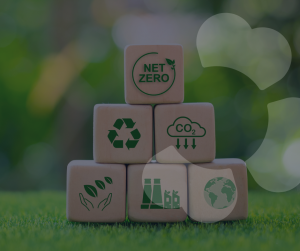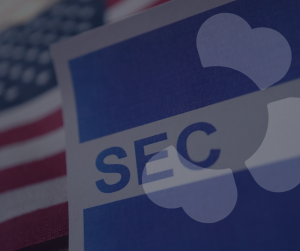The following 27 years will decide our planet’s future: Every industry needs to decarbonize to hit the 1.5-degree Celsius warming goal. For example, the transportation sector accounts for over 24% of global GHG emissions. It also contributes up to 37% of a product’s footprint. Reducing the carbon emissions from transportation starts by calculating the emissions from different modes accurately and finding the highest impact decarbonization strategies. This article explores the GLEC framework for the transportation sector and how the Cloverly platform complies with it.
The Role of GLEC
Emissions from different modes of transport like road, rail, air, and sea are hard to compare. Therefore, the first step is measuring emissions accurately and then prioritizing among the decarbonization levers available. The Global Logistics Emissions Council (GLEC) developed the GLEC framework as the only globally recognized methodology for calculating and comparing GHG emissions from different freight modes. It aligns with the GHG (GreenHouse Gas) Protocol, which defines how emissions should be calculated. It also adheres to CDP’s (Carbon Disclosure Project) reporting guidelines and the UN-led Global Green Freight Action Plan. The framework defines clear standards and procedures for precise measurement of distances, and fossil fuel consumption by vehicle type, and provides guidelines for emissions calculations. To get a complete picture on emissions from transport, emissions from the extraction of the fossil fuel from the oil well to emissions from vehicle exhaust need to be considered, also called well-to-wheel emissions. Following the GLEC framework allows organizations to evaluate well-to-wheel emissions for different transport modes and make decisions to reduce emissions rapidly.
Decarbonizing the Transportation Sector
Delivering goods across the globe requires multi-modal transport, and the added complexity of international trade requires several stakeholders to work together. This is where Smart Freight Center(SFC) plays a pivotal role. SFC is a global non-profit organization focused on reducing the carbon impact of the global freight sector. SFC was started to reduce greenhouse gas emissions of the logistics sector by one billion tonnes by 2030 and to reach zero emissions by 2050 or earlier, consistent with a 1.5° future. It brings together partners to quantify the impact of the logistics sector and propagate carbon reduction strategies. In addition, it aims to accelerate the adoption of carbon by training and scaling organizations in the industry. SFC provides thought leadership and a collaborative platform for Sustainable Freight Buyers and international logistics providers to work together toward carbon reduction. Its efforts saved 8-9 million tonnes of CO2 between 2016-2020 and continue to reduce emissions across industries, borders, and transport modes. Smart Freight Center performs a rigorous accreditation process to accredit service providers like Cloverly on how their emissions calculations conform to the GLEC standards.
Cloverly now offers GLEC compliant well-to-wheel calculations
At Cloverly, we are constantly improving our solutions so that our customers get the most accurate picture on emissions and the latest guidance on offset strategies. We are proud to share that Cloverly is now accredited by Smart Freight Center to provide calculations according to the GLEC standard. Cloverly went through the detailed accreditation process and is certified to provide well-to-wheel GHG emissions, expressed in units of CO2 equivalent. The accreditation covers all 4 modes of transport – air, rail, road and sea. Air and sea calculations have been certified globally, while road and rail have been certified for North America.
Offering GLEC-compliant calculations for shipping estimates makes it incredibly easy for logistics companies, freight forwarders, and supply chain software providers to integrate with Cloverly to provide visibility and compensation of emissions to end-users. Consumer-focused industries like e-commerce, retail, and real estate can now use Cloverly’s carbon footprint calculation API to estimate emissions from shipping products from the warehouse to end-user as well as upstream emissions for raw materials from suppliers to the manufacturing site.
Using Cloverly’s API and marketplace integrations, companies can offer impactful climate contribution and offsetting options to their customers. Cloverly’s focus on the quality of carbon projects ensures that all contributions go toward real climate impact. Built-in transparency and reporting within the product help businesses communicate all aspects of their impact accurately — climate impact through the tons of carbon removed and social impact through the UN Sustainable Development Goals (SDGs) that are fulfilled by the projects.





